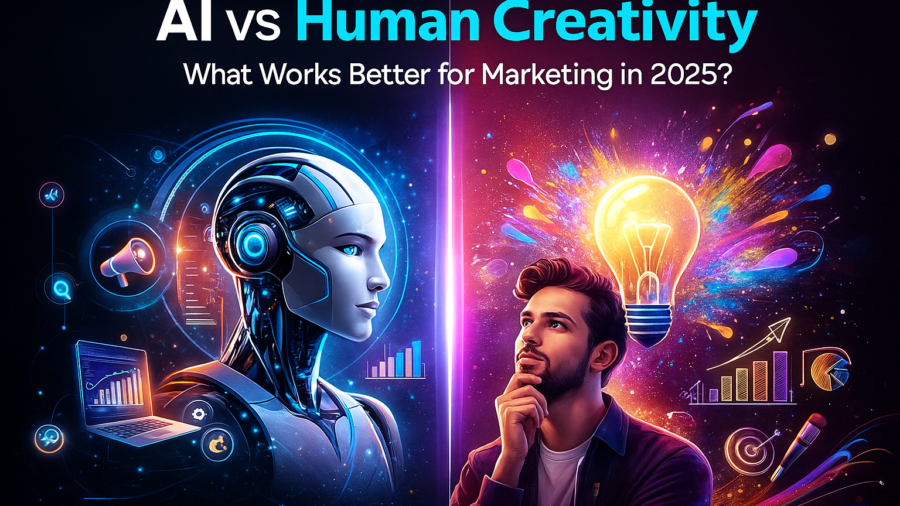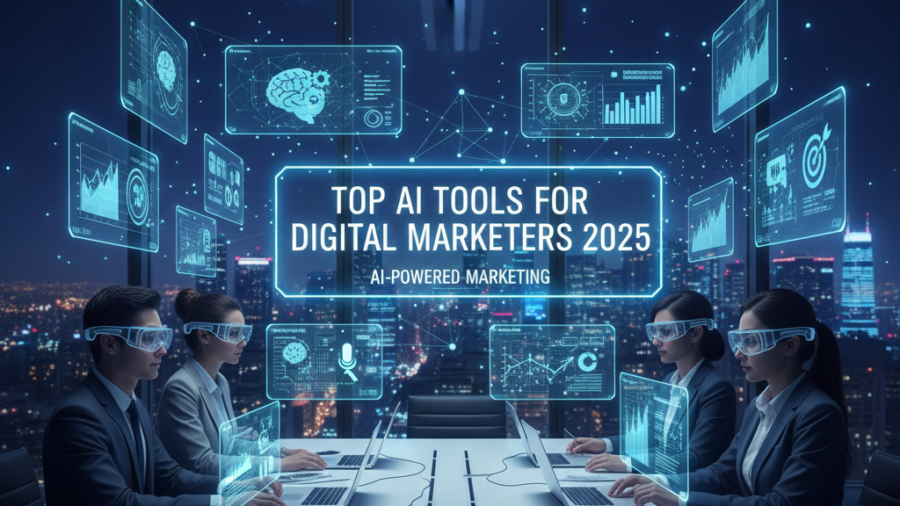In 2025, the marketing world stands at a turning point.
Brands are now asking a big question:
“Should we use AI or human creativity — or both — to grow faster?”
Today, AI tools can write content, create images, analyze data, and even predict trends.
But human creativity brings emotion, storytelling, authenticity, and originality — things AI still cannot fully replicate.
1. AI in Marketing: What It Does Best
AI has become the most powerful marketing tool in 2025. It helps brands work faster, smarter, and at lower cost.
✔ AI Strengths
-
Speed – AI creates blogs, videos, captions, and designs in seconds.
-
Data Analysis – AI studies large data sets and predicts customer behavior.
-
Personalization – AI can deliver tailor-made content to each user.
-
Consistency – Produces content regularly without fatigue.
-
Cost-Effective – Reduces expenses for startups and small businesses.
Where AI Works Best
-
SEO content writing
-
Social media scheduling
-
Email marketing automation
-
Ad targeting & optimization
-
Trend analysis
-
A/B testing
-
Customer support (chatbots)
AI is perfect for tasks that require speed, data, and automation.
2. Human Creativity: What People Still Do Better
No matter how advanced AI becomes, human creativity is irreplaceable in several areas.
✔ Human Strengths
-
Emotions & Empathy – Humans understand feelings, struggles, dreams.
-
Original Ideas – Humans can think beyond patterns AI has learned.
-
Storytelling – Humans connect with audiences using life and experiences.
-
Brand Voice – Humans create personality and unique brand identity.
-
Cultural Understanding – Humans know what is meaningful in society.
Where Humans Work Best
-
Branding strategies
-
Creative campaigns
-
Video storytelling
-
Scripting commercials
-
Writing emotional content
-
Building customer relationships
-
Problem-solving during unexpected challenges
Human creativity drives emotional connection and brand loyalty.
3. AI vs Human: Key Differences
| Feature | AI Strength | Human Strength |
|---|---|---|
| Speed | Creates content instantly | Slower but thoughtful |
| Creativity | Pattern-based creativity | Original, emotional creativity |
| Data Use | Deep data analysis | Limited compared to AI |
| Emotion | Lacks personal experiences | Strong emotional expression |
| Cost | Cost-effective | Requires budget |
| Brand Voice | Sometimes generic | Unique and personalized |
4. Which One Works Better for Marketing in 2025?
The truth is:
Neither AI nor humans alone can win.
The best results come from blending both.
Why the Combination Works
-
AI gives speed + data
-
Humans give creativity + emotion
Together, they produce powerful marketing outputs.
Examples
✔ AI generates 10 blog outlines → Human polishes and adds personality
✔ AI analyzes customer behavior → Human creates a creative campaign
✔ AI makes images → Human adds emotional storytelling
✔ AI suggests keywords → Human uses creativity to write unique content
The combination is called:
Human-AI Collaborative Marketing (HACM)
… and it is the biggest trend in 2025.
5. Real-World Examples
1. Nike
Uses AI for data but human designers for emotional storytelling.
2. Netflix
AI predicts what viewers like, but human writers create powerful stories.
3. Small Businesses
Use AI for content creation, but humans add authenticity to connect with local audiences.
6. When to Use AI & When to Use Humans
✔ Use AI for:
-
Keyword research
-
Automated emails
-
Blog drafts
-
Editing and grammar
-
Social media ideas
-
Market predictions
✔ Use Human Creativity for:
-
Branding
-
Emotional storytelling
-
Final content editing
-
Creating campaign themes
-
Writing hooks and scripts
-
Building trust with customers
7. Future of Marketing: Humans + AI Together
In 2025 and beyond, brands that win will use:
-
AI for efficiency & insights
-
Humans for strategy & creativity
This powerful mix results in:
✔ Higher engagement
✔ Better SEO ranking
✔ Faster growth
✔ Stronger brand identity
✔ More memorable campaigns
Conclusion
AI is transforming the marketing world, but it cannot replace human creativity.
AI brings speed, precision, and data, while humans bring emotion, originality, and story.



